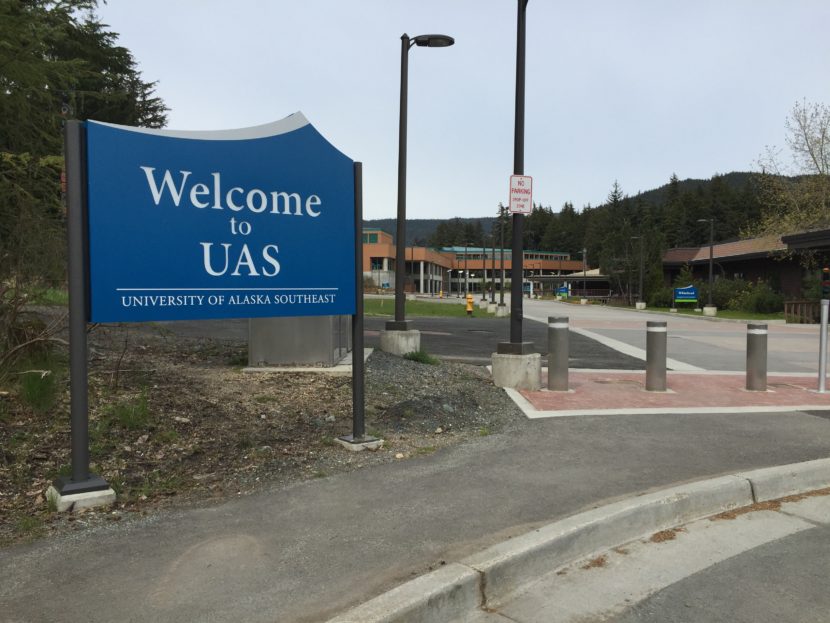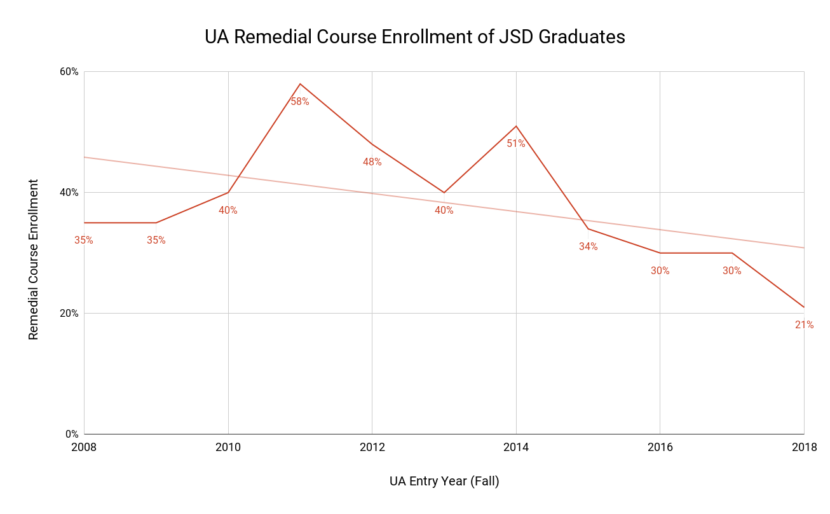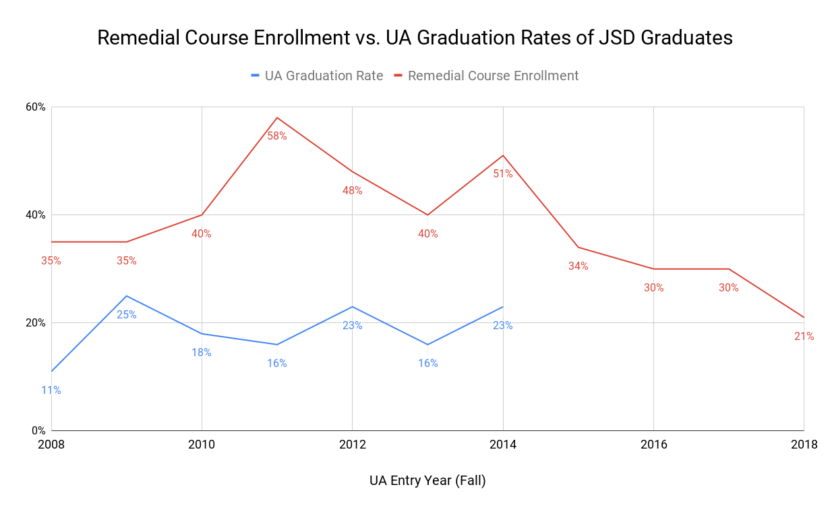
Over the past five years, more students who graduate from Juneau high schools are ready for college. That’s according to the University of Alaska Southeast. But whether you see improvement depends on what you’re looking at.
Each year, a few dozen students graduating from Juneau high schools choose to stay in town for college. They enroll at the University of Alaska Southeast.
UAS Provost Karen Carey said those students haven’t always had an easy time when they get there. But recently, she said, things have been looking up.
“Their students are being much more successful now at the college level,” said Carey, “So we are very pleased about that.”
Carey said more and more Juneau high school graduates are arriving at UAS and across the University of Alaska ready for college. She shared the good news with the Juneau School District Board of Education in February and explained how it’s measured.
At UAS, “college ready” means you don’t have take any remedial courses below college level. Those are typically math and English courses that get students up to speed. Remedial courses don’t earn students any credit toward a degree — but they cost just as much as credit-earning courses.
“And so in some cases in the past we had students taking those courses two, three, four times and were paying for those courses out of pocket but weren’t getting any college credit at all,” said Carey.
In just the past five years, the number of Juneau graduates who had to take at least one course below college level when they reached the UA system has fallen dramatically: from over half to just 1 in 5.

UAS and the Juneau School District are calling it a win. But not everyone is convinced.
Herb Schroeder is vice provost for the Alaska Native Science and Engineering Program, or ANSEP, at the University of Alaska Anchorage. A couple years ago, he led a study that looked at college readiness of Alaska high school graduates over a ten-year period between 2006-2015.
The findings were not encouraging, especially for Juneau. Three-quarters of Juneau-Douglas High School graduates enrolled in at least one math or English course below college level during their first year in the UA system.
Schroeder questions the sunnier UAS report. That’s because while his study used national standards to define college-level coursework set by ACT — the education nonprofit best known for its standardized test widely used for college admissions — UAS sets its own bar. And that bar is lower than those national standards.
Schroeder is troubled that high schools and colleges in Alaska are making up their own definitions of college readiness. But Carey sees it differently. She said she won’t agree or disagree with the national standards.
“I think you have to know your individual students and what your population looks like,” she said.
And Carey said for UAS students, their definition of “college ready” makes sense.
It includes two courses that fall short of the national standards: one in math, one in English. Those courses don’t count toward general education requirements at UAS — they’re prerequisites for qualifying courses — but Carey said placing into them doesn’t necessarily mean extra semesters — and extra dollars — for students.
“Those courses can count toward electives or toward other things that the student might need in their program,” said Carey. “They get college-level credit.”
For an explanation of why more Juneau graduates are coming into college well-prepared, Carey points to changes the Juneau School District made five years ago. That’s when the high school graduation requirement was raised to three years of math and four years of English, and the district rolled out a more rigorous curriculum for both math and language arts.
Success in college is ultimately not about how you start, but how — and if — you finish. Juneau students have a higher four-year graduation rate from UA schools than the state average, but it’s still just 1 in 5 on average for all JSD graduates who entered the UA system in the last 10 years.

That too could change. The first class of Juneau high school students who had to clear that higher bar started college four years ago last fall. It remains to be seen just how many of them will walk across UA stages this spring, diploma in hand.
